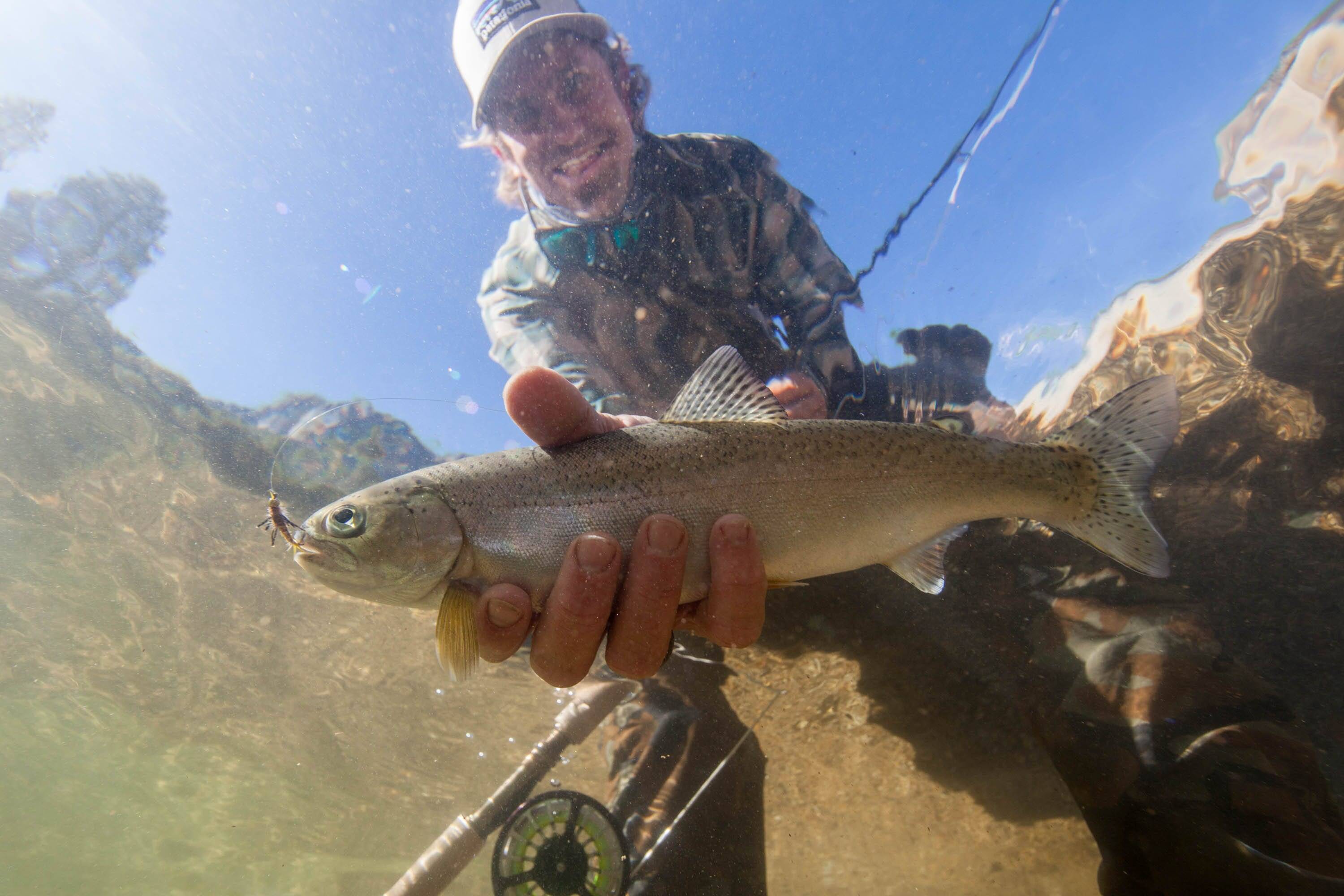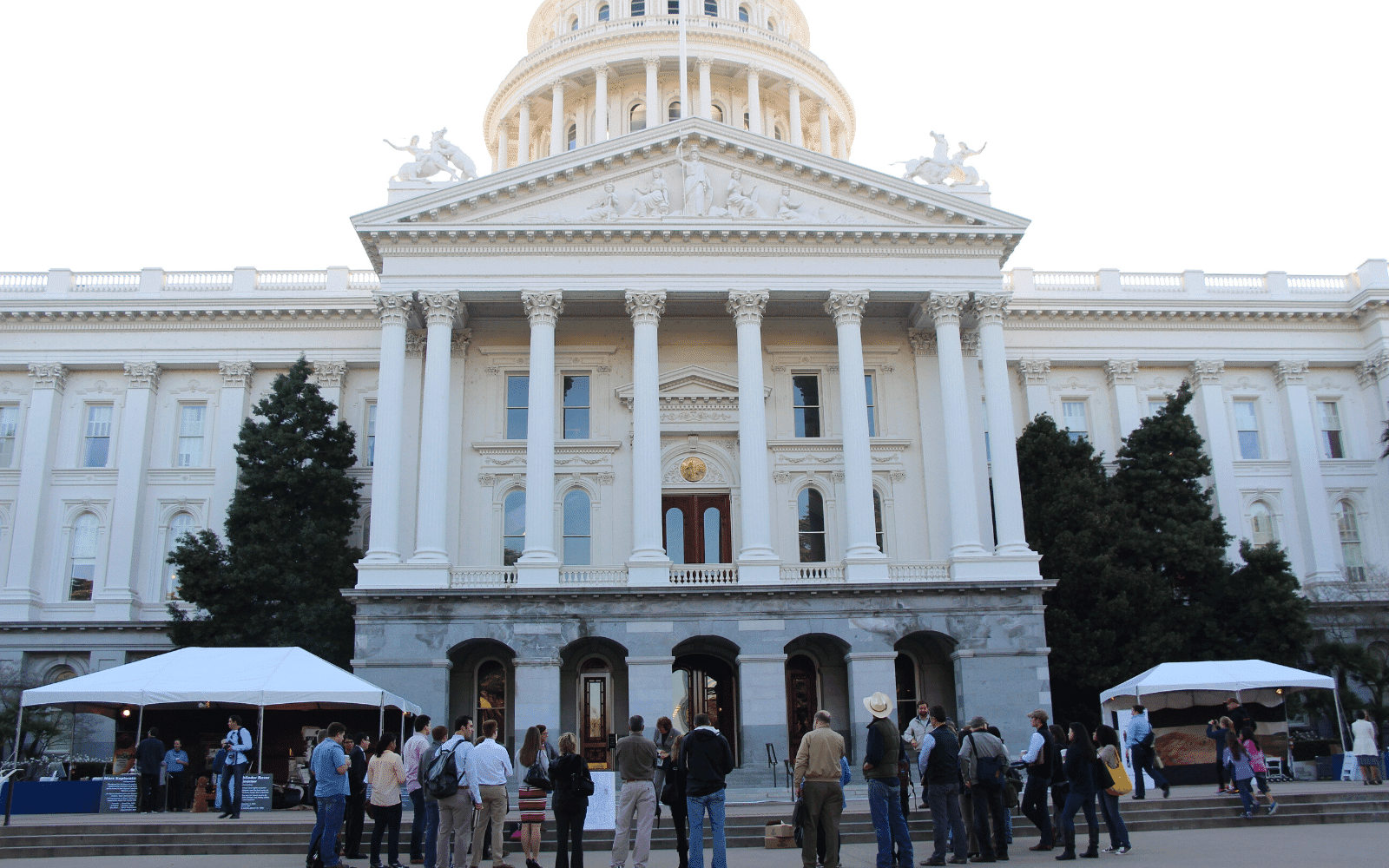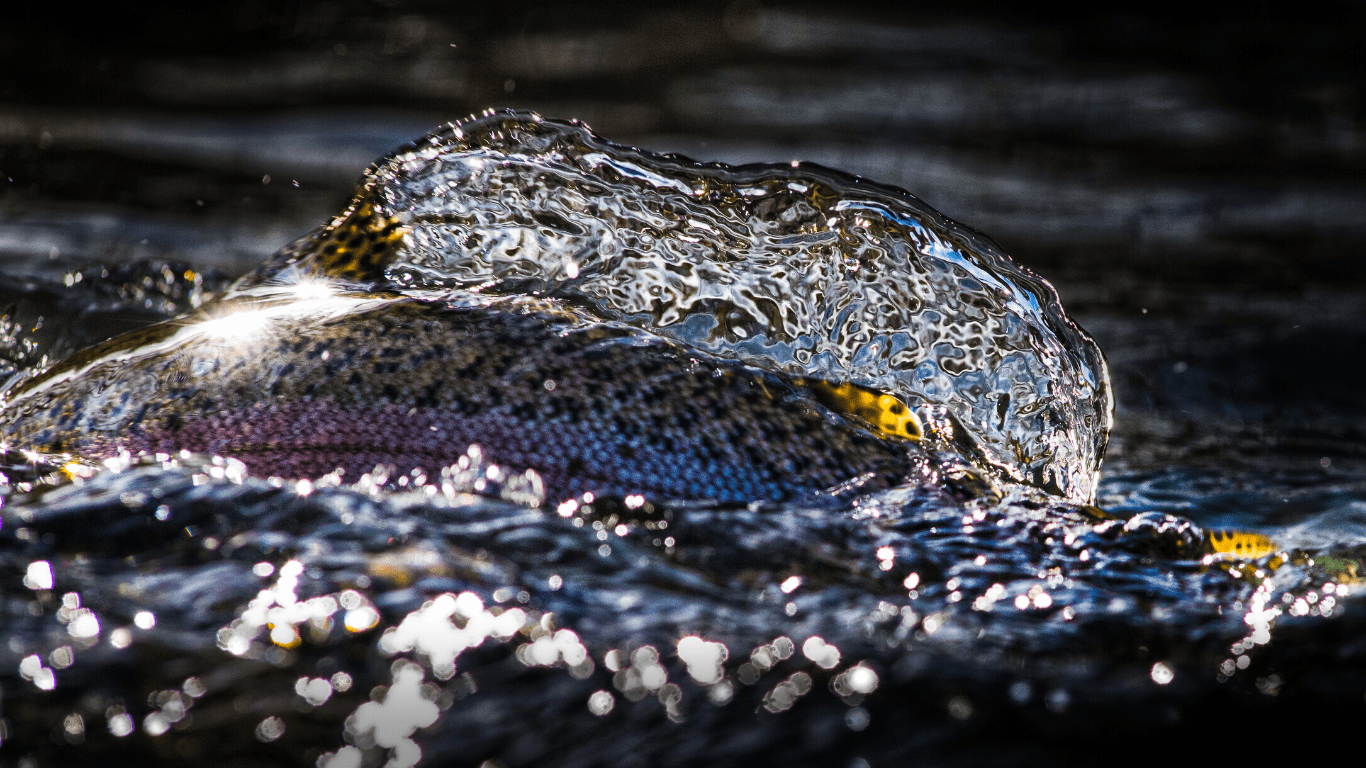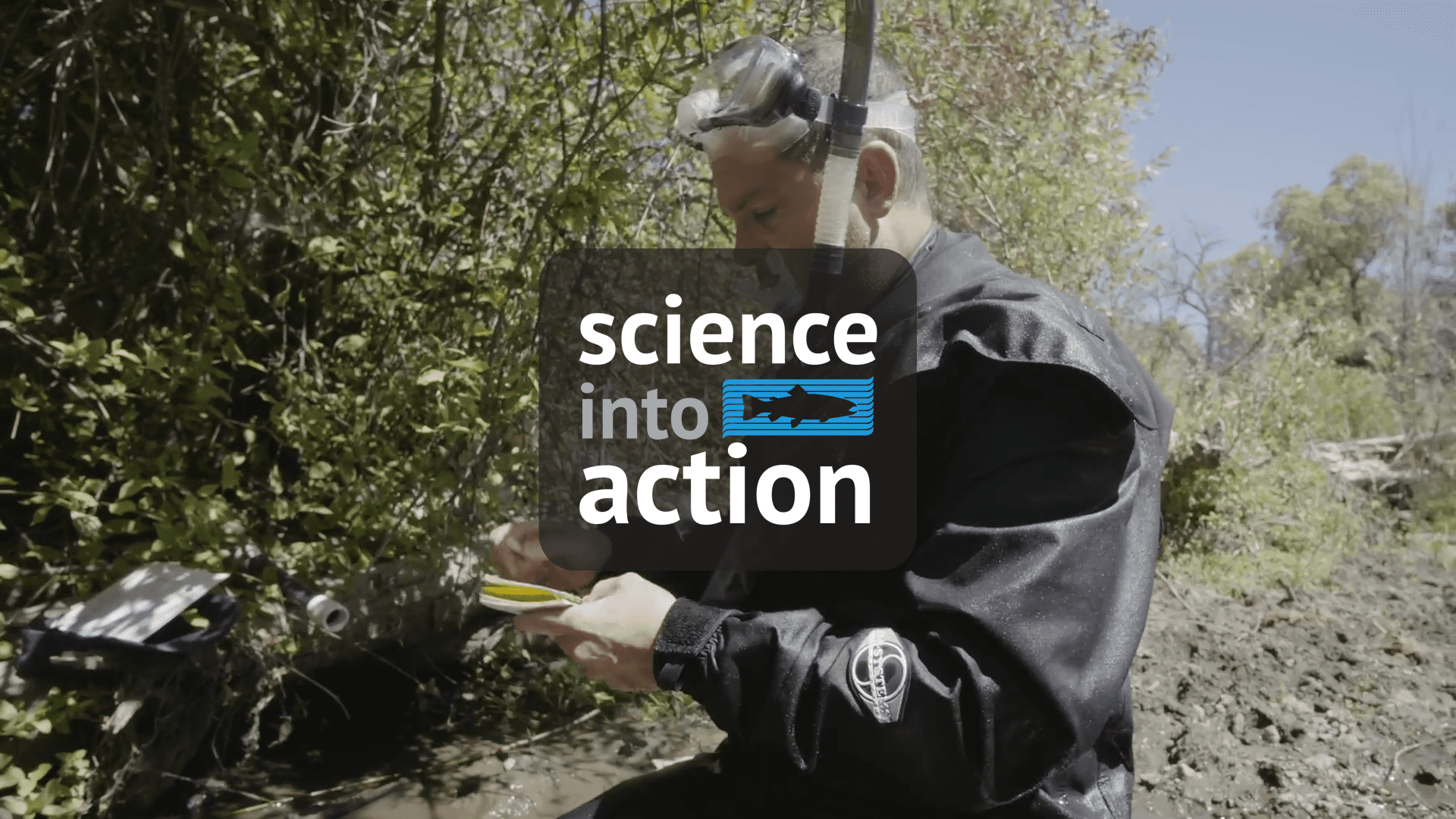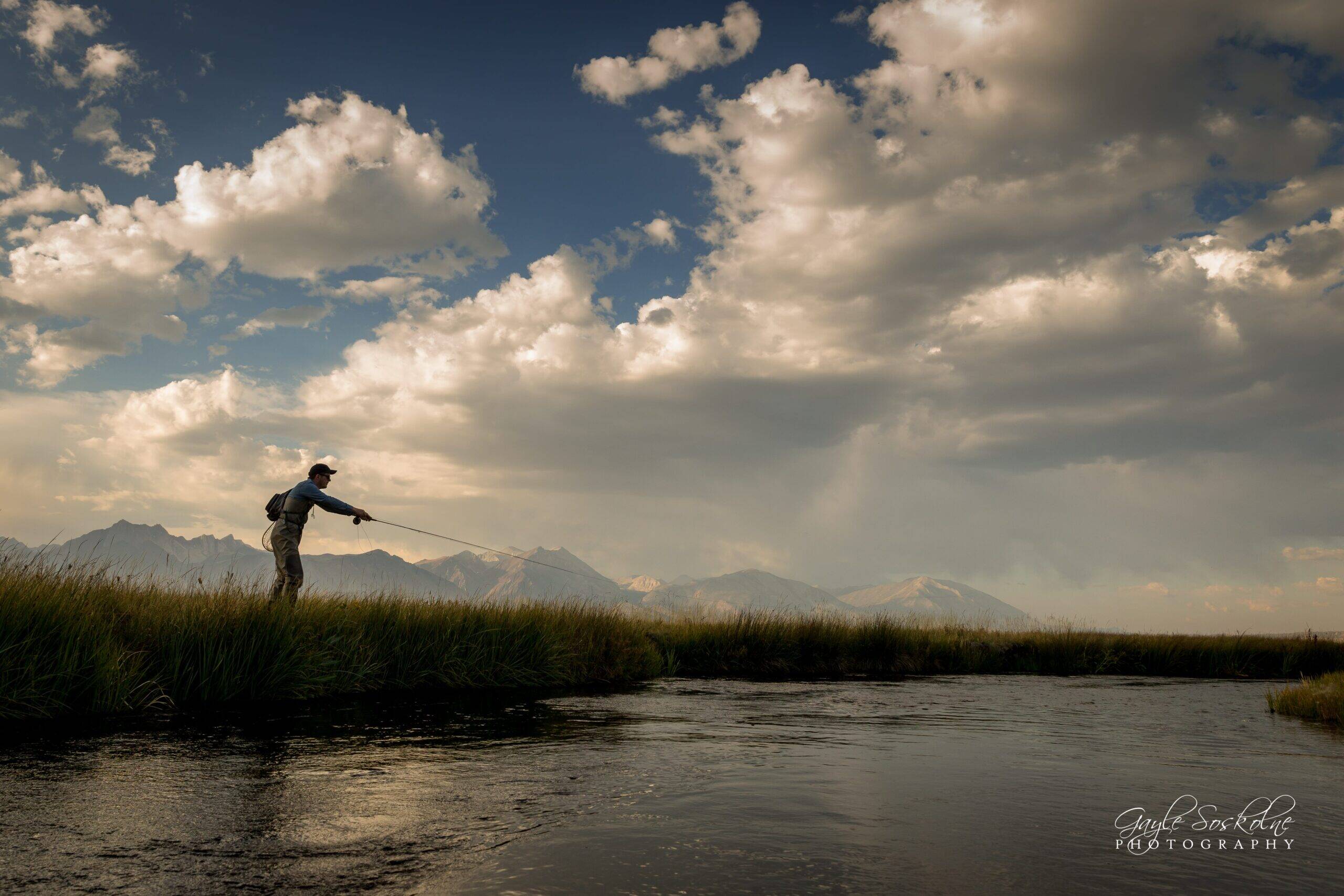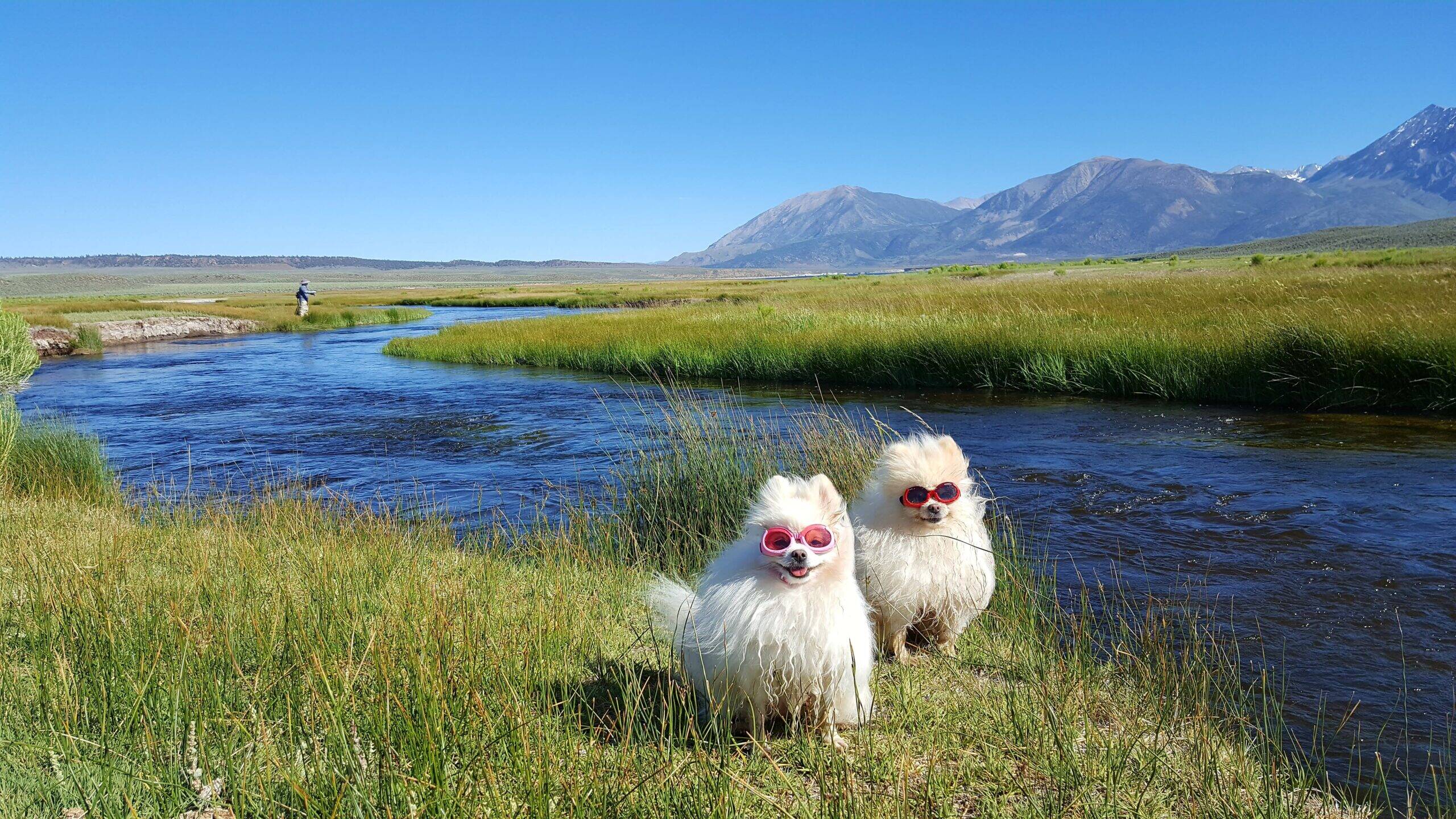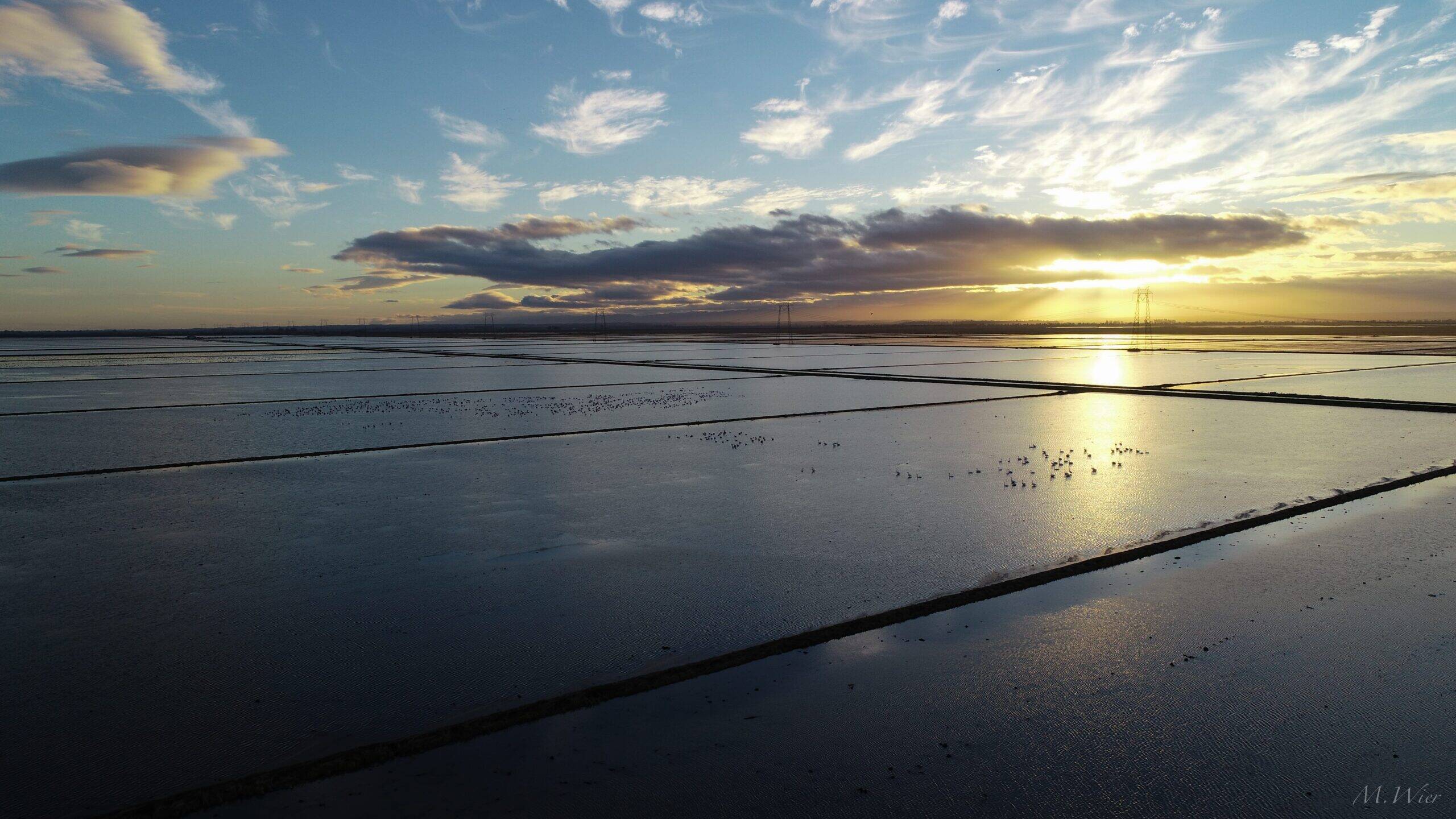By Michael Wier
Field reporter and fishing ambassador for California Trout
In the world of salmonids, size does matter!
Being big is a great advantage to every type of salmonid. From the beginning, the smolt that can get food first and grow the fastest has the best chance of survival.
Growing bigger quickly typically increases the chances of survival and provides multiple advantages. Bigger fish get the best lies in the stream or areas of habitat in still water.
They can hunt and kill larger food sources sooner and are able to migrate farther, handle swift currents, and jump over larger obstacles.
The bigger a trout, steelhead or salmon grows, the better it can avoid or survive certain types of predators.
What is it all leading up to? For all salmonids the ultimate goal is to reproduce.
The bigger a salmonid is, the better chance it has to successfully spawn. A larger female can carry more eggs and a larger male has a competitive edge.
The male can breed with the top female and pass on the best genetics to the next generation.
So why is it so ingrained in our culture to try to catch and kill the biggest ones and take them home as our personal “trophy”?
Cover Photo: Rainbow Trout in Truckee by Mike Wier

I know I’m preaching to the choir here as I share some of the reasons why I feel it’s way past time to start looking at fishing differently and treat large wild trout, salmon and steelhead more as a valuable resource and less like a personal trophy.
I know most folks reading The Current are already well versed in catch and release ethics and have little interest in keeping large trout anyway.
My hope is that this article will provide you with some talking points to start up conversations with other anglers and to eventually help change the fishing culture in California to allow for better resource management and, ultimately, a better fishing experience for everyone.
California is historically home to some of the biggest salmonids on the planet. At the turn of the century, King (Chinook) salmon used to average around 40-50 pounds.
Back then, King salmon were regularly pushing 100 pounds. We also had the largest native inland trout in known history, the Tahoe/Pyramid Lake strain of Lahontan Cutthroat (LCT).
They were once called salmon trout by the early 19th century explorers who mistook them for salmon. Native LCT have been recorded up to 40 pounds in Tahoe and Pyramid and there’s evidence they’ve gotten even bigger than that. Possibly up to 70 lbs or larger at one time! Our steelhead used to easily reach the upper 30lb mark and sometimes even bigger.
Even our native land-locked rainbow trout grew huge as seen in places like the Upper Kern River and Eagle Lake.
And, while there are many factors leading to the overall decline in the average size of our native salmonids, California still has the capacity to grow large, wild fish. Plenty of habitat exists where trout can grow up to 15-20 lbs. There was even a Chinook carcass recorded at 86 lbs just a few years ago in a tributary of the Sacramento River.
Overall, however, the number of large fish are steadily declining, and sport fishing is contributing to that decline.
Photo: Mike Wier
There are many reasons why salmon and steelhead are becoming smaller on average, but for the sake of this article we will focus on inland wild trout fisheries.
Currently, (as far as I’m aware), there are no regulations to protect large brood stock wild trout except for catch and release only waters.
This means that in most California’s trout fisheries, folks are legally allowed to keep the biggest fish they can catch. And I regularly see this happen.
In fact, this practice is still encouraged in most areas.
How many of you have seen the cooler in front of the Bridgeport Ken’s Sporting Goods on opening weekend where anglers are encouraged to bring in their big wild browns and rainbows to get a photo taken for the wall of fame then keep the fish on display for days or even weeks in the cooler?
Or if you’ve ever stopped by the general store in Markleeville and seen the polaroids on the wall of huge, dead trout.
I could go on and on.
It’s in our fishing culture to want to keep the biggest fish we can catch! But just because it’s legal to do so, should we?

Get your own Galvan Torque T5 Reel with custom CalTrout logo and save fish at the same time! Proceeds support our conservation efforts. As the premier reel in the Galvan range, the Torque Series reels represent the culmination of a lifetime of fly-fishing and passion for reel design. Simply stated, it represents the very best of modern fly reel architecture. Get yours here (limited quantity).
I think it’s time to move past the trophy trout kill mentality and start thinking about the future well-being of our fisheries.
Am I against harvesting trout or eating trout? No.
I think it’s great and I love to eat trout. However, I feel it’s important to understand the fisheries and know if the population can support harvesting of wild trout or if it’s stocked with trout for the purpose of harvest.
In wild trout fisheries, it’s important to maintain a brood stock of larger class fish to spawn and naturally maintain the populations.
Here are some of the reasons I feel we should encourage releasing the biggest of our wild trout.

Health Concerns
Research shows that heavy metals and toxins become more concentrated the higher you travel up the food chain. The larger and older a fish grows, the more toxins build up in that animal.
The FDA has issued guidelines about consuming certain types of fish because they are found to be full of toxins and not healthy for children, pregnant women, and older people.
California’s inland fisheries have also suffered a legacy of gold mining and other land-use practices that have disturbed the stream bed, introduced sediments, and exposed heavy metals such as mercury and other toxic metals, minerals, and even chemicals.
Trout feed on caddis, stonefly larva, and crayfish which forage off the bottom of waterways. The longer a trout feeds on these food sources, the more likely it is to contain high levels of toxic elements.
Many anglers have stated the small to mid-size trout taste better and are easier to cook and I tend to agree.
I would much rather eat a 16” trout then a 28” trout any day. They taste much better and are healthier to consume.
Photo; Dan Rhodes
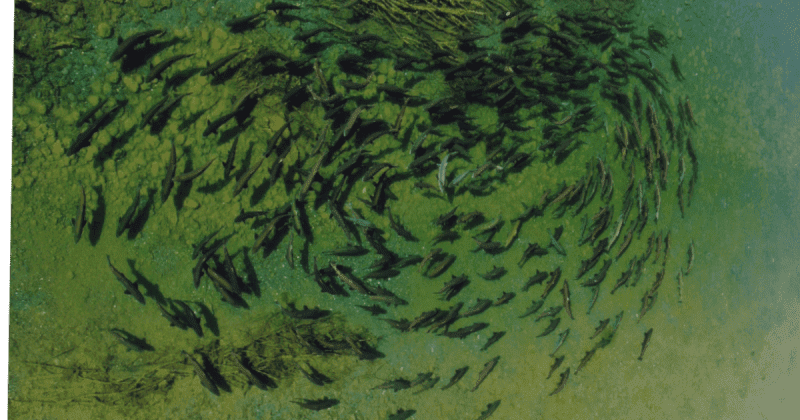
Brood Stock
The biggest trout has the best chance of successfully spawning and passing on the strongt genetics for the long-term survival of that species or population.
The bigger a female trout gets, the more eggs it can produce when it spawns.
The more offspring a fish can produce increases the survival rates for any given cohort.
Increased reproductivity can affect the overall health and sustainability of the fishery.
Larger fish can also move bigger substrate when they spawn which can create better conditions for eggs and, in turn, more viability for the survival of offspring.
Photo: Dave Sopjes
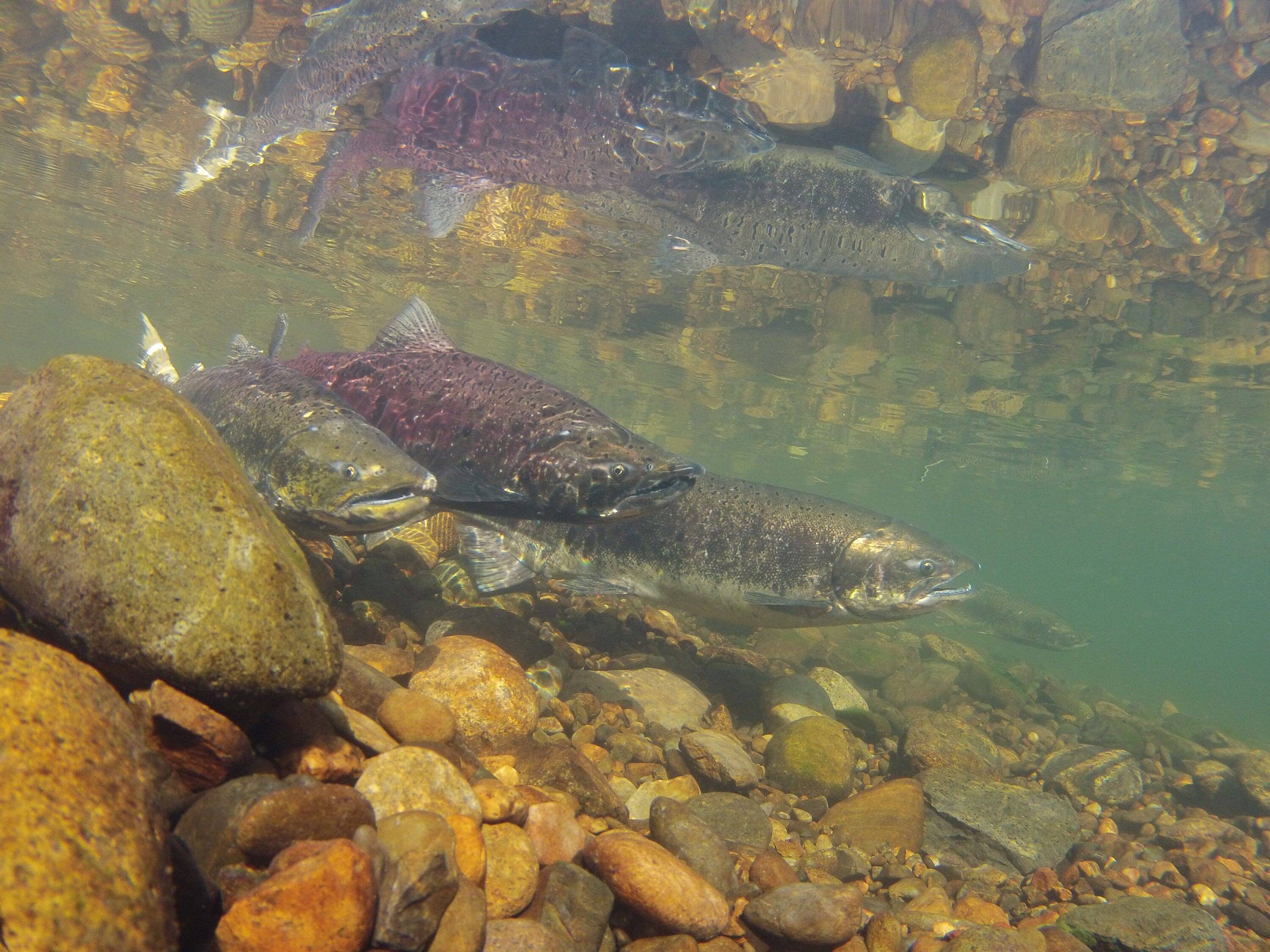
Stronger Genetics
In a natural spawning scenario, the largest male typically finds the largest female and courts her to mate.
In any given spawning scenario, it is observed time and time again that there will be a dominant pair where the strongest and biggest male will guard his female and fight off all the competing males.
On the flip side, females must accept their partner. They choose the biggest male they can find.
In this regard, the strongest and healthiest genetics get passed along.
Sometimes, there are always a few jacks or smaller males that move in right at the end which helps allow for genetic diversity.
However, on average the biggest male fertilizes most of the biggest females’ eggs.
Big fish breeding with other big fish also produces offspring with healthier genetics and the ability to also get big.
In the past decade at Pyramid Lake, this model was proven when the hatchery found the Pilot Peak fish and started breeding the biggest males with the biggest females. Within 10 years, that population went from topping out at 12 pounds to reaching over 25 lbs. This is an example of how genetics come into play and 'big on big' breeding works even in captivity.
It’s also been observed repeatedly in wild scenarios.
When you take away the ability for wild fish to naturally select their own mates by removing the large fish, you are doing the population a disservice.
Having large males and females to reproduce in any given fishery will help sustain healthier populations of wild trout for generations to come.
Photo: Jim-Inman

Trophy Mentality
We all know the allure of a big trout.
Historically, it was considered so rare and special to catch a trophy trout that the angler took the catch home to show his family or even have the catch mounted.
Now, everyone has a cell phone or a camera to document their catch and mounts can in the form of picture frames.
It’s rare for trout to grow to large sizes today because of compounding stressors and thus we need those fish to stay in the ecosystem and reproduce.
The trophy kill mentality is a thing of yesteryear and it’s time to move away from glorifying that behavior. Catch a trophy trout, take a photo and quickly release it.
This way, fish can pass their genetics along and provide a thrill for the next lucky angler down the road.
It’s becoming harder for wild fish to reach those sizes and, when they do, let’s give them a pass and allow them to thrive and reproduce so we will have more harvestable trout in that mid-size range and more trophy trout experiences for a greater number of anglers.
Photo: Mike Wier

Angling Mortality
From my experience, larger trout are less likely to be mortally wounded from angling trauma. That is, if proper catch and release and handling techniques are also employed.
There may be some data to support this but, just by my own anecdotal fishing experience, I’ve seen overwhelmingly larger trout survive the experience of being caught and released much better.
One of the main reasons for this is the size of the fish in relation to the size of the hook.
Fishing streamers and large nymphs are becoming more popular, trout streamers can have hook sizes up to 2/0.
If a smaller trout grabs a fly with a big hook, it’s more likely to be embedded in the fish’s brain, eye, or other vital area of the head.
In bigger fish with bigger mouths, their maxilla and mandibles are more likely to be hooked in a solid part of its jaw. This alone can help decrease mortality.
Bigger fish are also smarter or more adapted to fishing pressure and have a better chance of hiding, not biting or otherwise evading most anglers. That can increase survival and add to the sport of the chase for seasoned anglers.
These issues are some of the main reasons I’ve shifted my fishing focus, for the most part, on targeting larger trout.
I’ve caught enough trout that I don’t need to catch a bunch of small trout or go for numbers anymore.
Also, it hurts to accidentally kill an animal I really like and respect so much.
No matter what, there are going to be some unanticipated mortalities even from proper catch and release angling. It’s just part of the sport.
As much as I love to fish, I also really like fish and want to do my best to reduce accidental mortality while angling.
On the other side, there is one fishing technique for trout that has significantly greater mortality rates for larger specimens, E-fishing.
The practice of electro-fishing is primarily deployed by the Department of Fish and Wildlife to sample fish populations or move fish that are stranded in bodies of water that are drying up or canals, lakes, or other infrastructure projects slated for work.
The electric charge from this technique seems to affect larger fish more than smaller ones. It’s very unfortunate but many of the larger trout I’ve seen or heard that were e-fished have died.
There have been a few cases where I’ve seen or heard larger browns in the upper teens dying from e-fishing as well.
Photo: Phil Reedy
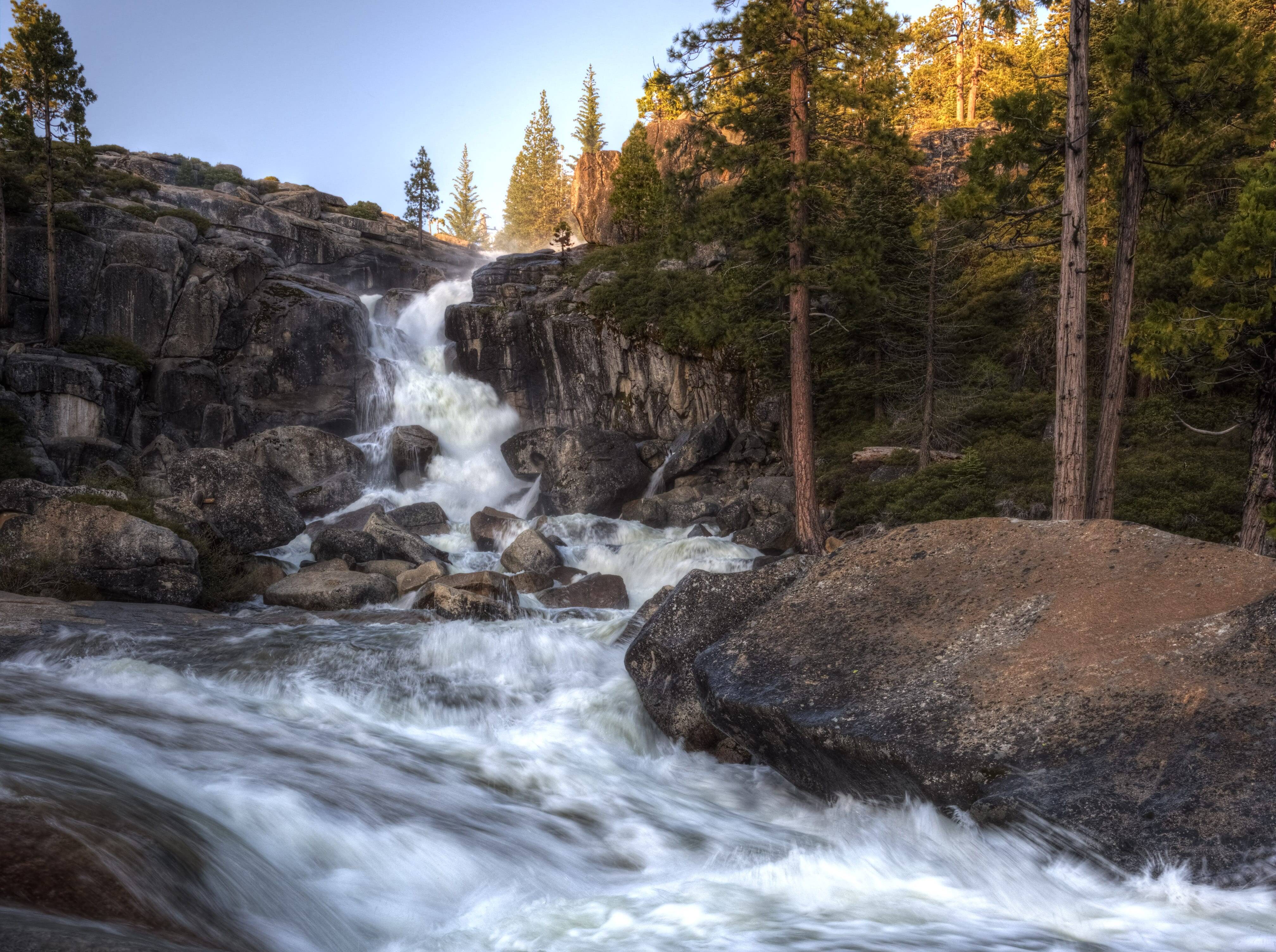
Economics
People travel all over the world for the chance to catch a big trout.
The bigger the fish, the more draw a fishery has and people will come far and wide for a chance to catch a big trout.
There is a whole culture of people who travel to target large fish and California could easily be a large fish destination if managed to be.
We have the habitat to produce large wild trout.
Through proper management of our cold-water ecosystems, we could create and maintain trophy trout fisheries that would draw anglers from around the world just like New Zealand, Argentina, Chile, Pyramid Lake, White River Arkansas and other known trophy trout destinations.
The economics of having healthy wild trout fisheries have been proven repeatedly. They provide a steady and sustainable revenue stream through eco-tourism.
And that is arguably the best and cleanest dollars to have flowing through an economy - non-extractive eco-tourism.
It also opens the door for more jobs such as guides, lodges, hotels, restaurants, and gear sales.
Photo: Phil Reedy
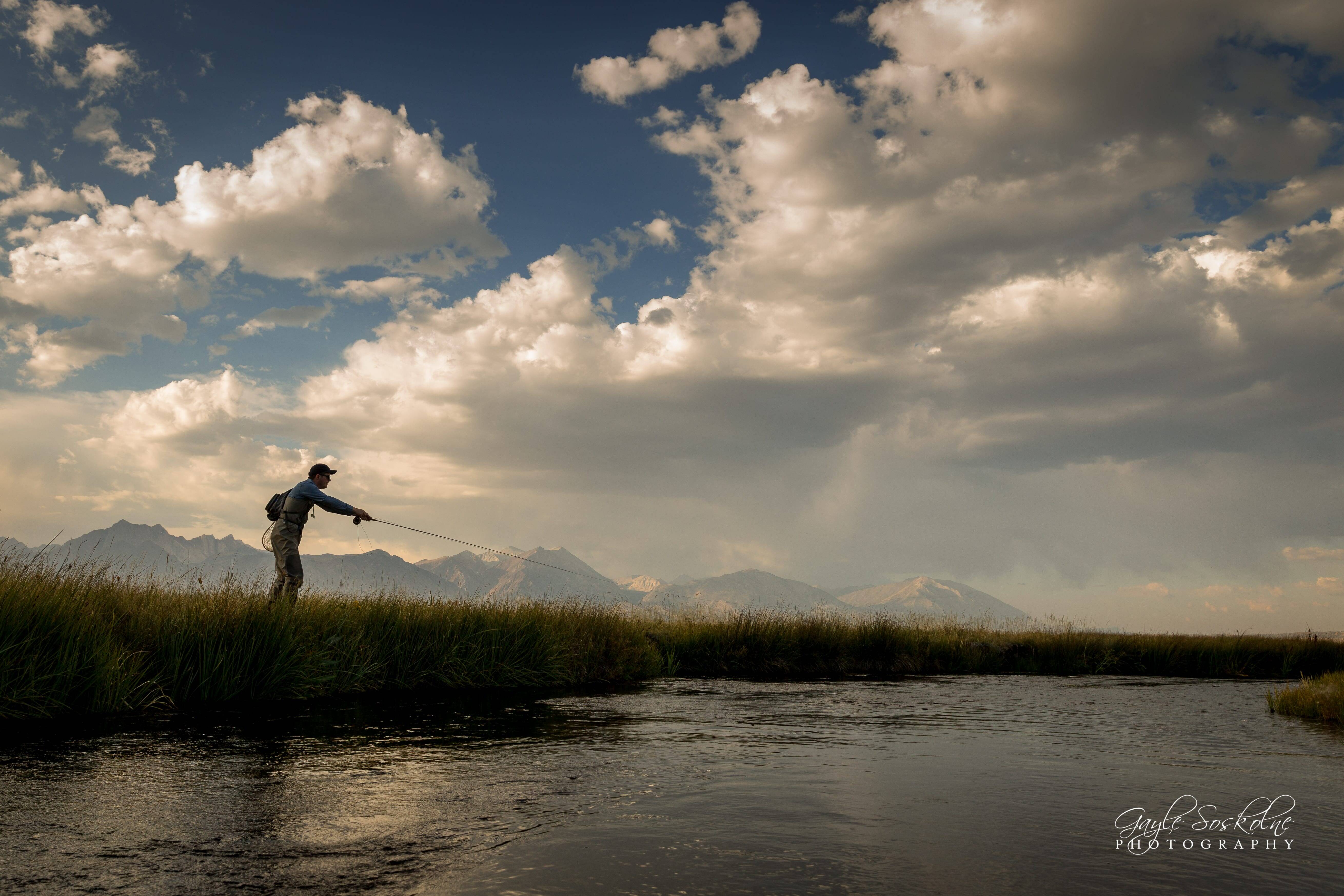
Regulation
Currently, the Department of Fish and Wildlife is going through a comprehensive overhaul of California’s inland trout fishing regulations.
Originally, they proposed changing the general trout fishing regulations to year-round fishing and five fish limits with no gear restrictions on the majority of California’s fisheries.
Because of the advocacy for anglers being done by CalTrout, TU, shop owners, and the public, they have now revised that general regulation to keep all waters open year-round unless otherwise stated but only allow harvest in the summer months and catch and release in the winter on moving water.
Still, water fisheries will remain open year-round with year-round harvest allowed.
This makes sense because rivers and still water are different types of habitats and should be treated as so.
Fish go to lakes to feed and grow. Moving water is where all trout have to spawn so it should be treated more like refugia and spawning times should be protected.
There are some new catch and release only waters being proposed but there are also some waters that are currently catch and release that are going to start to allow harvest again.
Two of the most notable are the Truckee from Prosser to Stateline and the East Carson from Hangman’s Bridge to Stateline. Both are currently catch and release and are slated to go back to allowing two fish harvest. This potentially means people can keep the largest trout in the river which could affect the trophy nature of those fisheries.
With all factors pointing to a major decline for native salmonids in the coming decades, we feel it’s important to advocate for fishing regulations that support and promote naturally sustaining wild trout fisheries.
One suggestion we proposed was, in lieu of catch and release, trying upper slot limits on potential trophy trout fisheries.
How would you feel about having not just a lower slot limit of 8” or 14” but also an upper slot limit of say 24 or 26” for fisheries that can produce large wild trout? Places like the Truckee, East Carson, East Walker, and Fall River among others. That would allow people to still harvest the best eating trout and leave the biggest trophy trout in the river to reproduce. It also spreads out the quality fishing experiences between more anglers. Meaning, those fish are worth a lot more left in the ecosystem for both species preservation and economic impact, then on the stringer of the first guy who tricks that trophy fish for any given year. Especially given there’s plenty of lakes nearby where people will be able to catch and keep trophy trout year-round.
Harvesting fish in that middle bracket will also keep the competition down and potentially allow larger brood stock class fish to inhabit those sections of river.
What’s the downside of that?
So back to the question, even if you can keep the biggest trout you catch, should you?
You can read the latest version of the proposed regulation changes at wildlife.ca.gov.
CDFW will submit the final regulatory package to the Fish and Game Commission in June of 2020.
After that, a series of public meetings will be held again and there will be a chance for the public to make comments to the commission.
Photo: Gayle Soskolne
In 2018, we released the revised Status of Salmonids Report stating that in 50 years we will lose 45% of our native salmonids and within 100 years 73% of our native trout, salmon, and steelhead will be gone if current trends persist.
All the science points to wild fish having a harder time surviving because of increased environmental stressors. Adding sport fishing to the list only makes it harder for trout to naturally reach those upper size classes.
Let’s take it upon ourselves as anglers to educate the angling population on the benefits of preserving our large wild fish heritage in this state and, in doing so, help sustain more quality fishing experiences for future generations.
Michael Wier
Field reporter and fishing ambassador for California Trout







